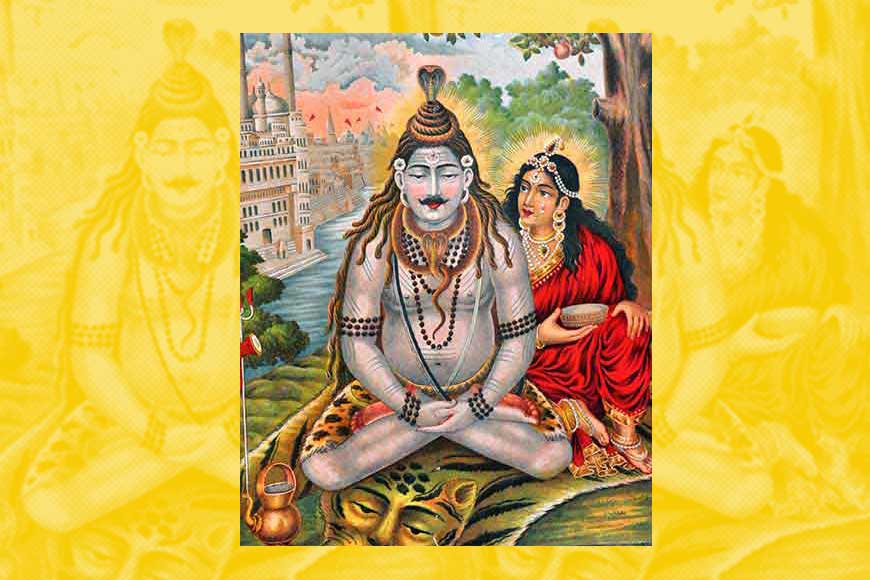Even Shiv-Parvati litho-art of Bengal got a British aristocratic touch!

The art of printing could be traced back to the lanes of Battala in North Kolkata, the birthplace of the Bengali printing press in the early 19th century. The year was 1878. Chor Bagan Art Studio released a colour lithograph print of Shiv Durga. It created quite a stir among the native Hindus. By then, artist/entrepreneur Annadaprasad Bagchi, who had specialized in the newly-introduced form of printing, lithography, started the Calcutta Art Studio at Bowbazar. His venture was an instant hit and the studio (still in operation) was one of the pioneers of modern Bengal printing since the advent of lithography in India in the late 19th century. Similar printing studios came up and flourished at Kansharipara, Chor Bagan and elsewhere. These studios were instrumental in popularizing urban art traditions of woodblock printing and lithography as they flourished in the Battala area of North Kolkata.
Lithography is a method of printing original drawings based on the immiscibility quotient of oil and water, invented in 1796 as a cheap method of publishing theatrical works and quickly adapted by others to produce paintings specially of famous personas, mythological characters and deities. Lithography in 19th-century was perhaps one of the few art forms which catered to both high and low art markets, and the artists of Kolkata who specialized in it did much to bring art to public consciousness and hold their interest. The first relief printed images made their appearance as textual illustrations in the first half of the 19th-century. Mythological stories were invented to go with the created prints and the public just lapped it up. The rising demand for prints opened a whole new vista for artists and art school students. The commercial aspect of this new art form attracted prospective entrepreneurs and Art School students joined in the print making business to compete with fellow artists/ print makers and grab a large chunk of the market. The vibrant indigenous art activity scene of North Kolkata had a deep influence on the evolution of Indian art prints.
The country was witnessing changes in all spheres of life at that time and the artists/print makers weaved stories interspersed with details of everyday life to make the fiction closer to life and relatable for the people. Railways as a mode of transport was gradually gaining importance. Hutom wrote in Hutom Pyanchar Noksha, the route from Kolkata to Allahabad was opened to the public and they availed trains to travel far for fun or pilgrimage during the Durga Puja. Author Durgacharan immediately picked up the idea and wrote a detailed account of how the gods have come down on Earth (Martya) from the heaven above (Swarga) and are now travelling on trains. This account inspired artists of Chor Bagan Art Studio to delineate Shiva and Parvati’s visit to Kolkata. They freshly arrived and rested on the western part of the Hooghly River, in other words, at Howrah, before they began touring the city. The hint is clear. The couple had just arrived in Howrah by train. The other side of the river also appears in the print where the silhouette of Nakhoda Mosque and Armenian Church makes it clear that the deities are yet to arrive in Kolkata. A detailed study of the portraits show interesting details. Lord Shiva sports a moustache, that is popularly referred to as Albert cut. This was Prince Albert’s signature style and originated from there. Realism marked the way Parvati’s style of sitting was depicted. Usually aristocratic women of Bengal sat in Parvati’s posture during those times, and the print maker copied it to the last detail.










